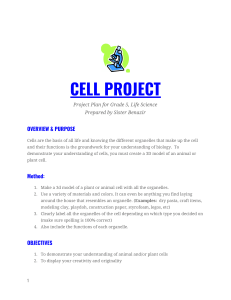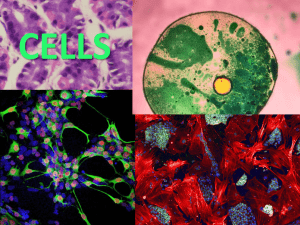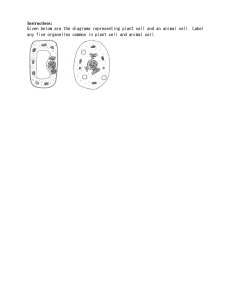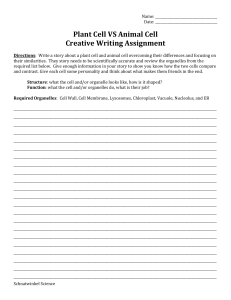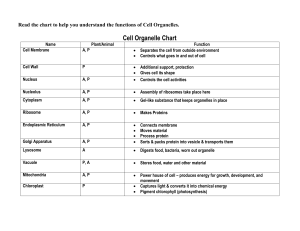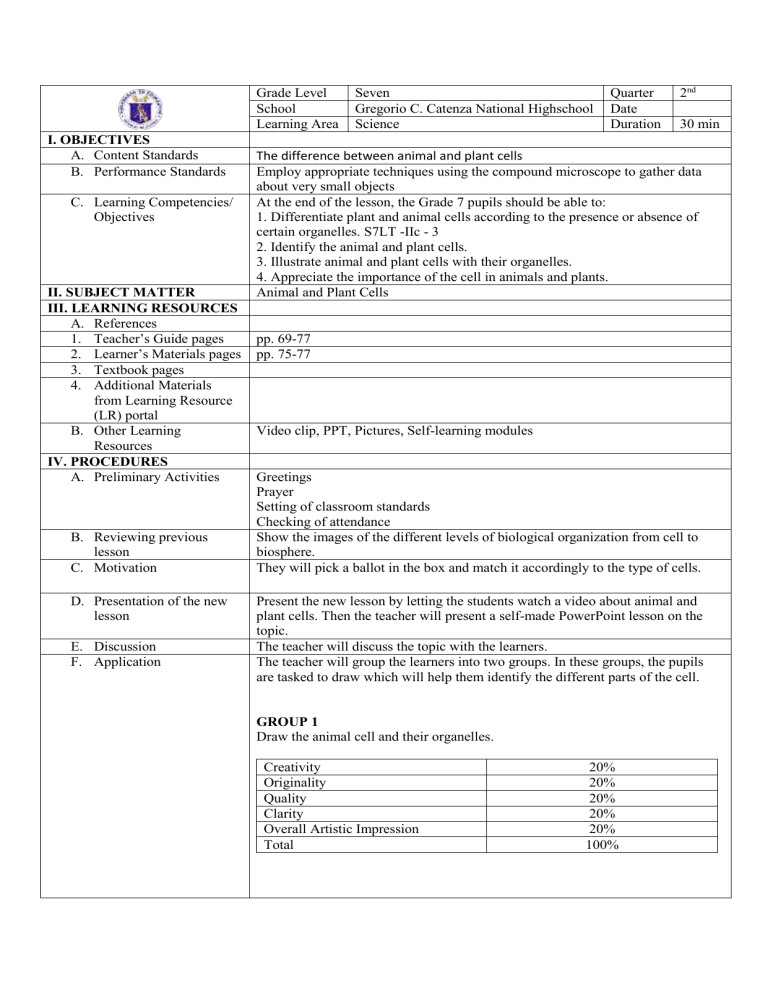
Grade Level School Learning Area I. OBJECTIVES A. Content Standards B. Performance Standards C. Learning Competencies/ Objectives II. SUBJECT MATTER III. LEARNING RESOURCES A. References 1. Teacher’s Guide pages 2. Learner’s Materials pages 3. Textbook pages 4. Additional Materials from Learning Resource (LR) portal B. Other Learning Resources IV. PROCEDURES A. Preliminary Activities B. Reviewing previous lesson C. Motivation D. Presentation of the new lesson E. Discussion F. Application Seven Gregorio C. Catenza National Highschool Science Quarter Date Duration 2nd 30 min The difference between animal and plant cells Employ appropriate techniques using the compound microscope to gather data about very small objects At the end of the lesson, the Grade 7 pupils should be able to: 1. Differentiate plant and animal cells according to the presence or absence of certain organelles. S7LT -IIc - 3 2. Identify the animal and plant cells. 3. Illustrate animal and plant cells with their organelles. 4. Appreciate the importance of the cell in animals and plants. Animal and Plant Cells pp. 69-77 pp. 75-77 Video clip, PPT, Pictures, Self-learning modules Greetings Prayer Setting of classroom standards Checking of attendance Show the images of the different levels of biological organization from cell to biosphere. They will pick a ballot in the box and match it accordingly to the type of cells. Present the new lesson by letting the students watch a video about animal and plant cells. Then the teacher will present a self-made PowerPoint lesson on the topic. The teacher will discuss the topic with the learners. The teacher will group the learners into two groups. In these groups, the pupils are tasked to draw which will help them identify the different parts of the cell. GROUP 1 Draw the animal cell and their organelles. Creativity Originality Quality Clarity Overall Artistic Impression Total 20% 20% 20% 20% 20% 100% GROUP 2 Draw the plant cell and their organelles. G. Generalization H. Evaluation Creativity 20% Originality 20% Quality 20% Clarity 20% Overall Artistic Impression 20% Total 100% The teacher will ask the following questions to the students to test their level of understanding of the lesson. 1. What are the different parts of animal and plant cells? 2. Which cell parts are present in both cells? 3. What are the organelles that can only be found in animal and plant cells? The pupils will fill up the concept map with the activities that suit each cell. The teacher will summarize the lesson after those questions are answered by the students. Match the functions of the cell in column A to its parts or organelle in column B. A 1. It is an organelle found only in animal cell involved in cell reproduction or cell division 2. An organelle found only in plants involved in food production 3. It consists of a jelly-like substance where all the other parts of the cell with different activities are located 4. It allows and prevents what goes into and out of the cell. 5. It is the powerhouse of the cell I. Assignment B A. Cytoplasm B. Centrioles C. Chloroplasts D. Mitochondria E. Plasma membrane Make a Venn Diagram of an animal and plant cell. Use long bond paper if possible. Rubric for scoring: Neatness Spelling Effort Correct Information Followed Directions Total Prepared: Name of the Teacher Designation Checked: Name of your School Head Designation Kaiser L. Oyzon RPh,. LPT Teacher I 20% 20% 20% 20% 20% 100%

